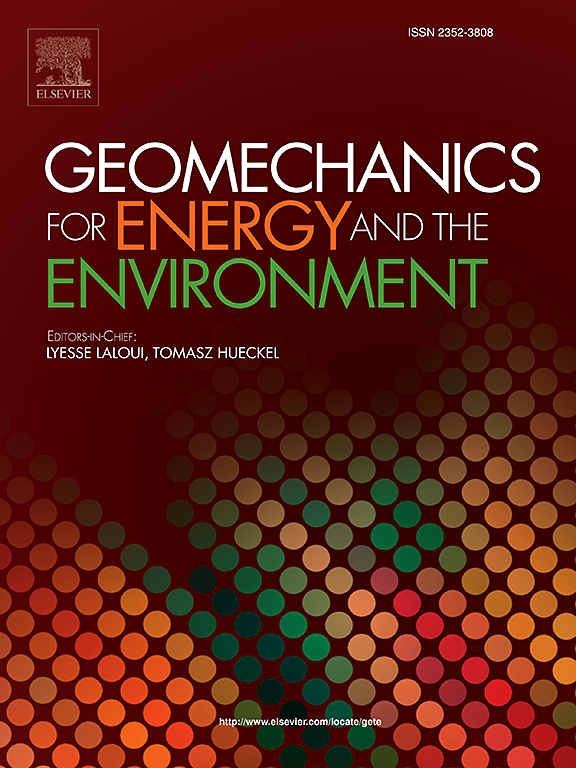Discrete fracture network model benchmarks developed and applied in a DECOVALEX-2023 repository performance assessment study
IF 3.3
2区 工程技术
Q3 ENERGY & FUELS
引用次数: 0
Abstract
This study presents newly developed benchmarks for modeling flow and transport within discrete fracture networks (DFNs) and useful methods for analyzing the results. The new benchmarks are designed to test modeling approaches for use in probabilistic performance assessment models of deep geologic repositories in fractured rock. The benchmarks simulate flow and transport through a 1 km³ block of fractured rock. The first simulates migration of a short pulse of tracer through a simple network of four intersecting fractures. The second adds 1089 stochastically generated fractures. The third changes the pulse to a continuous point source. Evaluation of model performance relies on moment analysis and comparison of the results of different models. The expected nondimensional first moment of the conservative tracer for each benchmark is 1. The benchmarks were simulated by teams from Canada, Czechia, Germany, Korea, Sweden, Taiwan, and the United States as part of a DECOVALEX-2023 study (decovalex.org). The teams used various approaches, including explicit DFN modeling, DFN upscaling to an equivalent continuous porous medium (ECPM), and a combination of both methods. Transport mechanisms are modeled using either the advection-dispersion equation or particle tracking. Results demonstrate strong agreement among the models in breakthrough behavior up to the 75th percentile. Significant deviations in first moments and well-clustered outputs led to the identification of inaccuracies in several models. Such findings exemplify the benefit of exercising these benchmarks and using the presented methods to test DFN flow and transport models.
求助全文
约1分钟内获得全文
求助全文
来源期刊

Geomechanics for Energy and the Environment
Earth and Planetary Sciences-Geotechnical Engineering and Engineering Geology
CiteScore
5.90
自引率
11.80%
发文量
87
期刊介绍:
The aim of the Journal is to publish research results of the highest quality and of lasting importance on the subject of geomechanics, with the focus on applications to geological energy production and storage, and the interaction of soils and rocks with the natural and engineered environment. Special attention is given to concepts and developments of new energy geotechnologies that comprise intrinsic mechanisms protecting the environment against a potential engineering induced damage, hence warranting sustainable usage of energy resources.
The scope of the journal is broad, including fundamental concepts in geomechanics and mechanics of porous media, the experiments and analysis of novel phenomena and applications. Of special interest are issues resulting from coupling of particular physics, chemistry and biology of external forcings, as well as of pore fluid/gas and minerals to the solid mechanics of the medium skeleton and pore fluid mechanics. The multi-scale and inter-scale interactions between the phenomena and the behavior representations are also of particular interest. Contributions to general theoretical approach to these issues, but of potential reference to geomechanics in its context of energy and the environment are also most welcome.
 求助内容:
求助内容: 应助结果提醒方式:
应助结果提醒方式:


